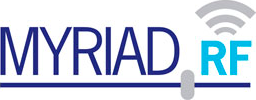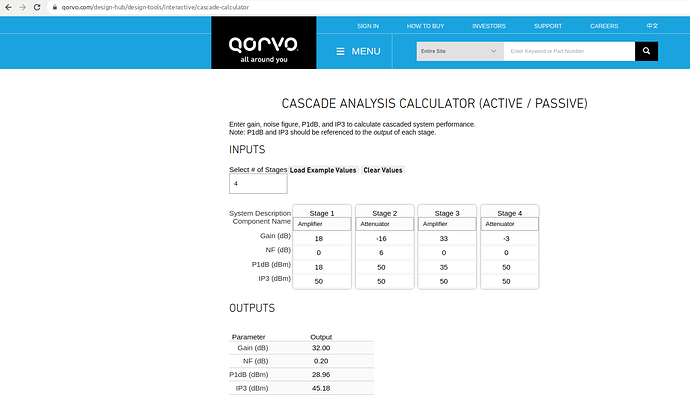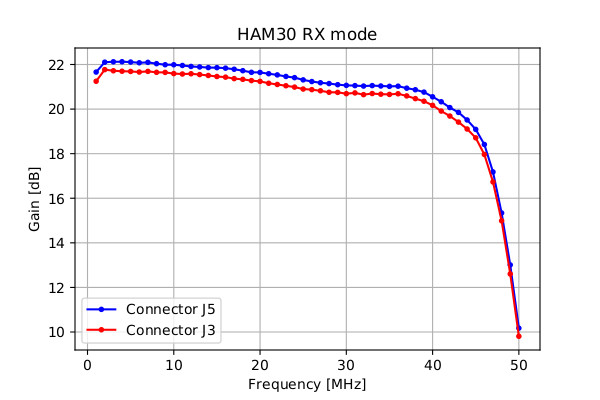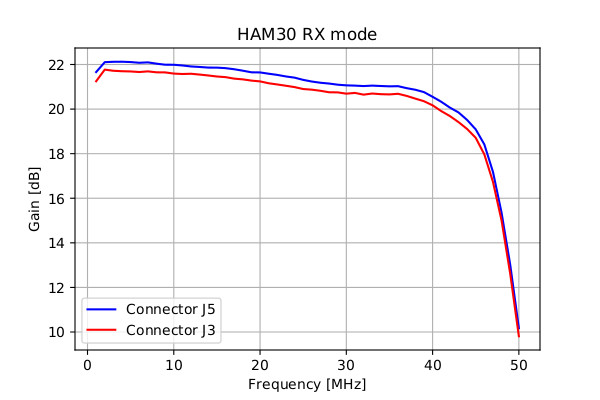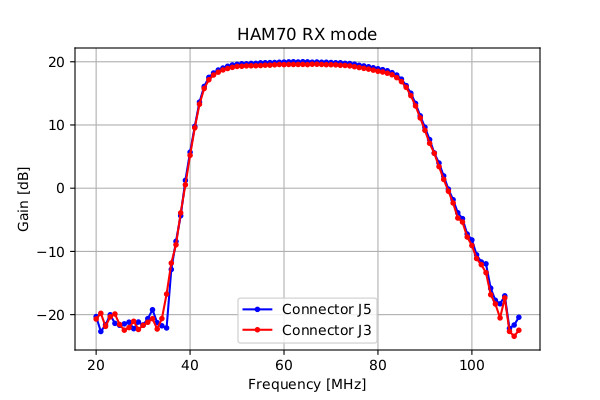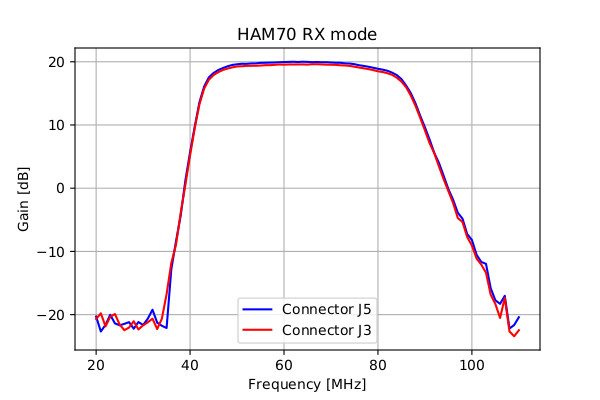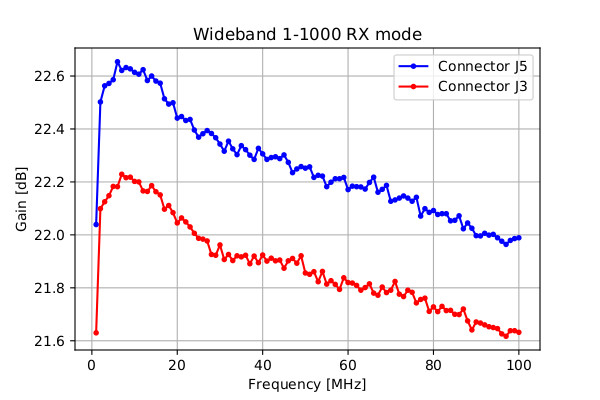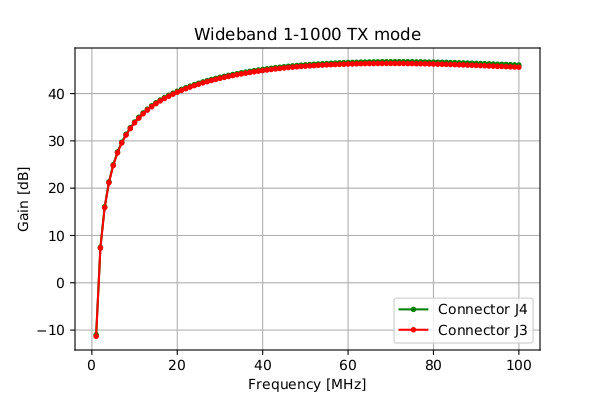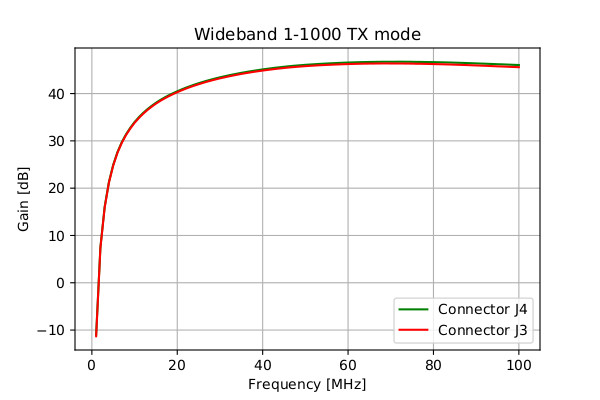Just received further clarification:
Direct answers on your questions are:
a) There is no any connection between J4 and J5.
b) J4 cannot be used for full duplex mode for frequencies below 100 MHz, when HAM30 and HAM50-70 are used.
c)Tomorrow I will do some additional measurements and maybe we will be able to use full-duplex mode for frequencies bellow 100 MHz.
Here are more details regarding your idea and maybe some possible solutions:
-
For Tx mode, for HAM30 and HAM50-70 transmitters, only J5 can be used.
For these frequencies we were forced to use relays, due to their good performances at low frequency but also for relay’s capability to endure high power (these HAM30, 50-70 transmitters give the highest power on the board).
There is not any option anyhow bring these transmitters signal to J3 or J4 (relay before J5 and HMC544A switch before LNA_L prevent that, Figure 9 in “Quick Starter Manual” document).
-
For Tx mode, there is an option for use connector J3 and J4 for frequencies below 100 MHz, but only with Wideband 1-1000 transmitter (the output power of this transmitter is considerably lower then HAM30, 50-70 transmitters). All measurements of this transmitter, published in “Measurement Results” document, are performed with J3 or J4 connector (I do not remember now which we used, but there is no big difference in performance between these two connectors). These measurement results are satisfactorily good, considering we used RF switches below their nominal operating frequencies.
The lowest frequency for this transmitter, in our tests, can be seen from “Measurement Results” document, and it was 50 MHz, as I can see now.
Tomorrow I will use lower frequencies for this test.
-
For RX mode, for HAM30 and HAM50-70 receivers in “Measurement Results” document, only J5 was used.
Here for this situation, I will test the board once again, but now J3 will be used instead J5 as an input connector. I will do this test tomorrow, and I will give you some comparable results between J3 and J5 connectors, for Rx mode, for HAM30 and HAM50-70 receivers.
-
Also, once again, Wideband 1-1000 receiver was tested, where input signal was brought at J3 connector. As I can se now from “Measurement Results” document, the lowest test frequency was 40 MHz.
Tomorrow I will use lower frequencies for this test.
